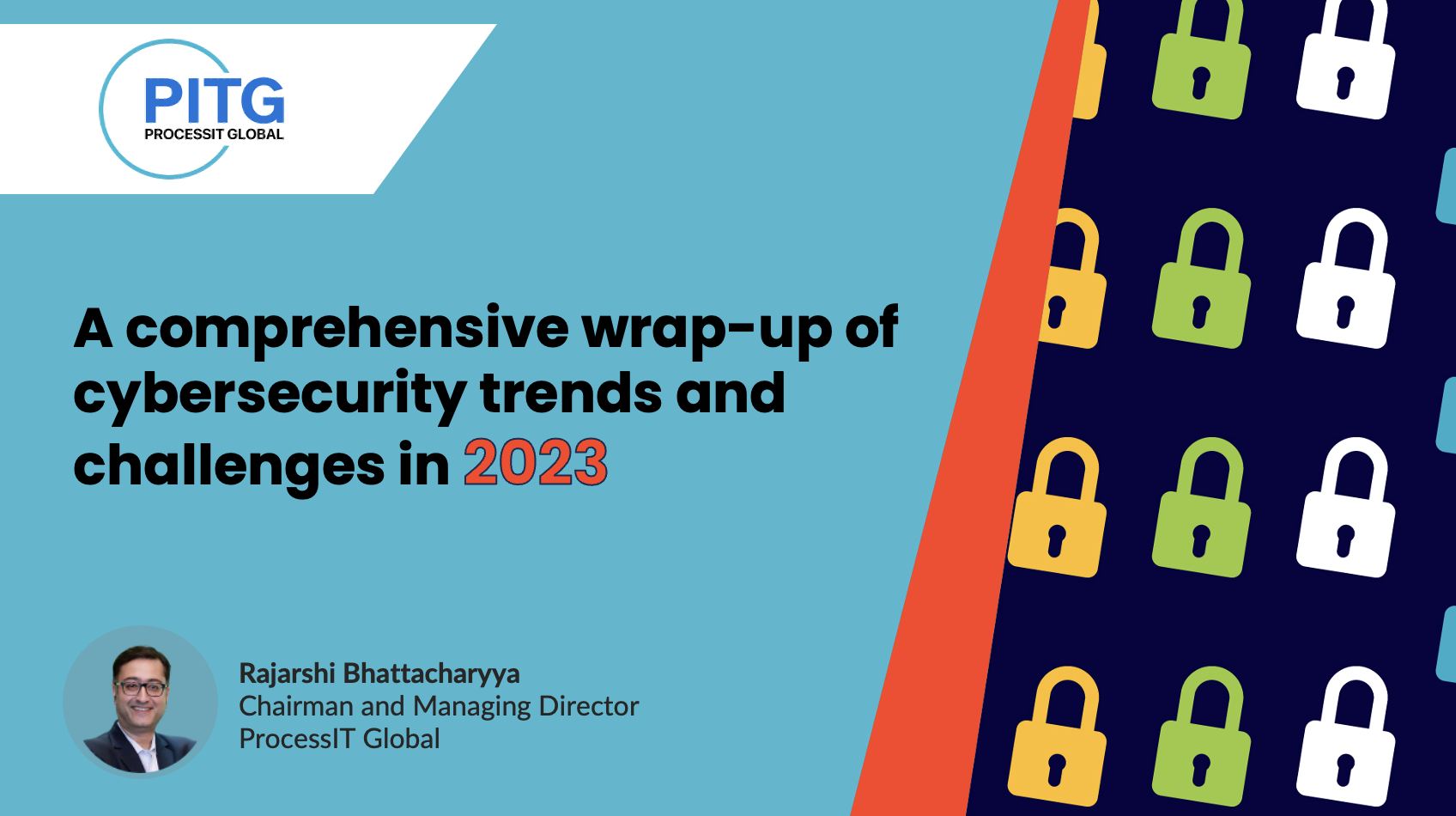A comprehensive wrap-up of cybersecurity trends and challenges in 2023 - Rajarshi Bhattacharyya, Co-Founder, Chairman and Managing Director, ProcessIT Global

The
year 2023 is coming to a close and it's time to reflect on the trends,
challenges, and developments that defined the cybersecurity landscape during
the year. It is true, that managing
cyber risk is a massive challenge for government agencies, organizations, and
individuals in the current digital, dynamic, and interconnected world. The cybersecurity space underwent deep
transformations that shaped the digital defense landscape in the year. Here’s a roundup of the trends and challenges
in the space that defined the year.
Rise in Ransomware Attacks
There
were several high-profile ransomware attacks on businesses, critical
infrastructure, and government agencies.
This occurred because such threats were quite profitable to
cybercriminals and paying the ransom was easier for victim organizations than
facing the consequences of a data breach.
Vulnerabilities in supply chain networks were exploited by leveraging
advanced encryption techniques.
Compromised credentials were another reason for the increase in
ransomware attacks.
Ransomware
gangs became more aggressive in the techniques and tools they used to make
victims pay their demands, which even included directly contacting and calling
executives
IoT Risk Landscape
The
number of connected IoT devices increased rapidly presenting a huge opportunity
for cybercriminals to carry out attacks.
Unsecured IoT was the weak spot in several cyber incidents across the
year which was frequently targeted by cyber criminals. Several unprotected healthcare IoT devices
were compromised and patient data was stolen quite frequently. IoT security
risks across the year included cyberattacks, physical security threats, data
breaches, and privacy concerns among others.
Organizations had to prioritize security and privacy measures to
safeguard their data and networks. Among
other best practices, organizations had to also plan for device lifecycle
management which includes retirement, replacement, and disposal.
Sophisticated social engineering attacks
Phishing
attacks got more sophisticated where cybercriminals conducted research and sent
highly convincing messages through varying messaging platforms. They also tried a combination of voice and
phishing via telephone after obtaining personal information or tried to gain
access to user networks and data by deploying malicious software. Cybercriminals also incorporated AI in more
sophisticated phishing campaigns. It
became imperative for businesses to invest in cybersecurity training and
awareness campaigns for users.
AI and ML impacted the cyber ecosystem
AI
and ML became key tools to help organizations navigate the cybersecurity
landscape as they provided quicker means to identify new attacks and draw
statistical inferences through predictive analytics that helped in mitigating
threats. On the other hand, these
technologies were increasingly used by threat actors to find and exploit
vulnerabilities. AIOps tools were
increasingly used to determine in real-time if the activity was suspicious or
not.
Attacks on cloud and mobile remained high
As
the demand for smart devices continued to grow, people became more dependent on
mobile apps, smart homes/vehicles, and the cloud and these further
revolutionized the way we live and work.
They also became top threat vectors during the year. Increased API and misconfigured cloud storage
were among other cybersecurity threats and organizations as well as individuals
had to take proactive measures to secure their devices.
Data breaches, leaks, and data losses
were some major security issues that had to be addressed constantly. Increased APIs and misconfigured cloud
storage were other cybersecurity threats.
Cybersecurity regulations and compliance
As
cybersecurity became recognized as a national security imperative, globally,
governments further increased their efforts to improve cybersecurity
regulations and compliance standards.
Businesses also faced increased scrutiny as there were more mandatory
requirements. Cybersecurity in India has
become critical with the rapid growth of digitalization and increasing reliance
on technology. The Indian government
recognized the growing importance of cybersecurity and took several initiatives
to address the challenges of cyber threats.
Some
of the top cybersecurity regulations that were focused on were the Information
Technology (IT) Act, of 2000, the Personal Data Protection Bill, of 2019, and
the National Cybersecurity Policy, of 2013.
Promoting Digital Trust and Confidence, Protection of Personal Data, and
safeguarding National Security are some of the methods deployed for the
all-around security of the citizens in the context of cyber security.
Increase in Zero Trust Approach
During
the year, the adoption of Zero-Trust Architecture accelerated as several
organizations across industry verticals looked towards strengthening their
defenses against the evolving threats.
Failure of the perimeter-based approach that was used earlier was seen
as a failure with the mobile workforce and multi-cloud architecture.
This
approach ensured least-privilege access, the segment of the network, and
continuous verification, and authorization of the user. It also helped in reducing the attack
surface, provided better visibility on the devices connected across the
network, and delivered an enhanced user experience.
Cybersecurity Skills Shortage
The
challenges of bridging the talent gap and the lack of cybersecurity skills
among professionals continued to persist in 2023. Due to this, organizations have become more
and more vulnerable to cyber threats. Furthermore, the skills shortage impacted
the cybersecurity industry functionality and cybersecurity workforce burnout.
Government agencies and industry aimed at closing skills gaps through a focus
on education and training with various initiatives. Several industries adopted
advanced technology and automation to mitigate cybersecurity skills shortage.
The
cybersecurity landscape of 2023 reveals several challenges and innovations in
the year that could act as a framework going forward. Organizations have to continue investing in
talent, technology, and tools to succeed in the complex and ever-evolving
digital landscape. They have to remain
vigilant and deploy proactive measures to protect their systems and data to
mitigate the risks of cyberattacks and ensure business continuity.



